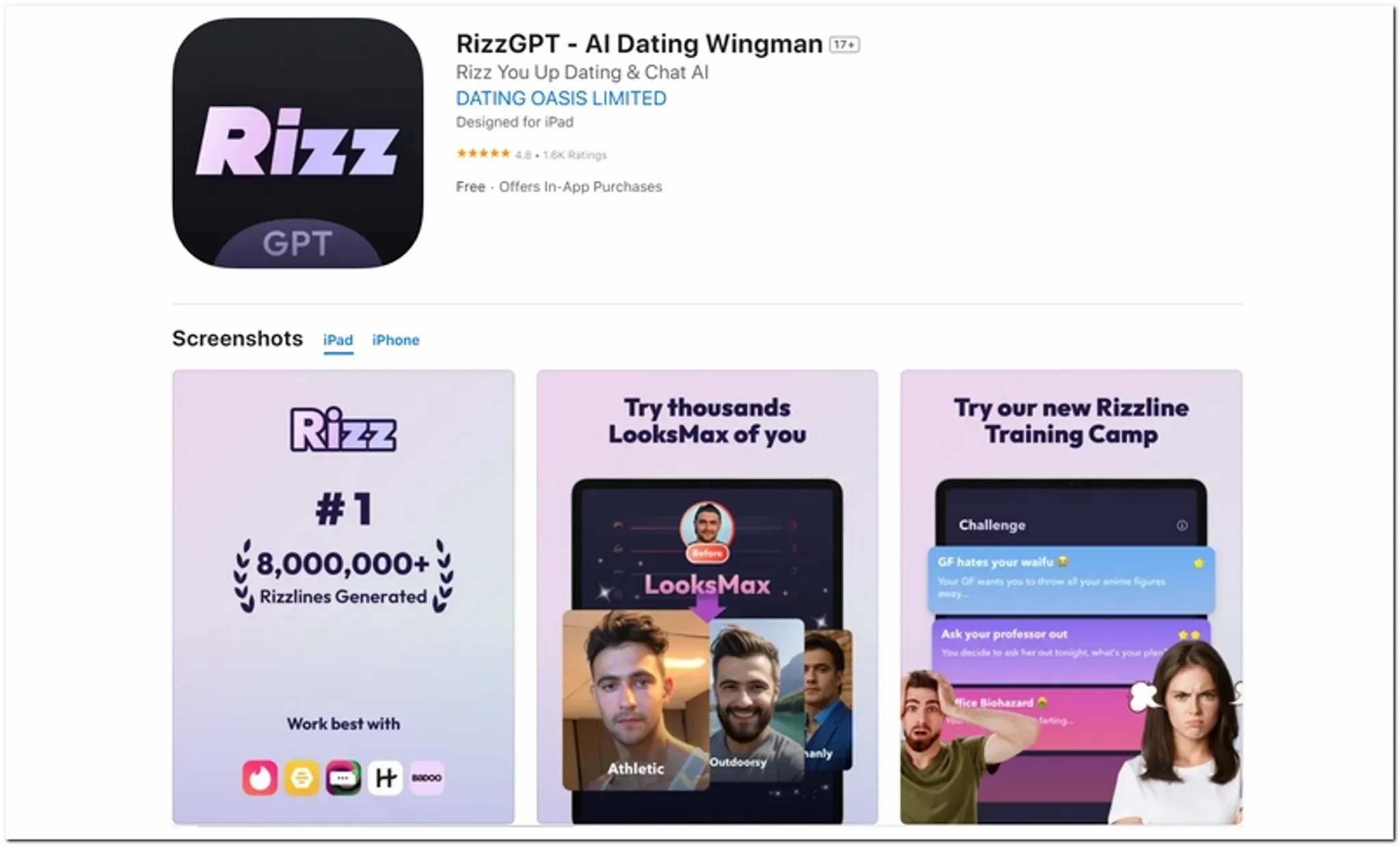Alright folks, let's dive into the buzz around AI attractiveness tests. You’ve probably heard whispers about these futuristic tools that claim to analyze your face and rate how "attractive" you are. But what’s the deal? Is this the next big thing in self-assessment, or just another tech gimmick? Let’s break it down together, shall we?
Now, before we get too deep into the nitty-gritty, let’s set the scene. Imagine walking into a virtual mirror where an algorithm tells you whether you're rocking the hottest look or need a few tweaks. Sounds wild, right? But here's the kicker – these AI attractiveness tests are becoming more mainstream than ever. People are using them for everything from boosting self-confidence to prepping for dating apps.
But hold up – before you go uploading your selfies, let’s talk about what we’re really dealing with here. These tests aren’t just about vanity; they’re a reflection of how far AI has come in understanding human preferences. And trust me, the implications are bigger than you might think. So buckle up, because we’re about to deep-dive into the world of AI attractiveness tests.
- Saucy Santanas Net Worth The Shocking Truth Revealed
- Anthony Hamiltons Net Worth From Music To Millions 2024
What Exactly is an AI Attractiveness Test?
Let’s start with the basics. An AI attractiveness test is essentially a software tool that uses artificial intelligence to analyze facial features and rate them based on predetermined criteria. Think of it as a digital beauty pageant judge, but without the tiaras or sashes. These algorithms look at factors like symmetry, skin tone, and even facial proportions to spit out a score. Sounds simple enough, but there’s a lot more going on under the hood.
For instance, did you know that some of these tests claim to be based on scientific studies of human attraction? Yeah, they're pulling from research that says things like facial symmetry are linked to perceived attractiveness. But here’s the thing – science is one thing, and real-life human perception is another beast entirely. So while these tests might sound legit, they’re still just a computer’s opinion.
How Do These Tests Work?
Alright, let’s get technical for a sec. Most AI attractiveness tests use machine learning algorithms that have been trained on massive datasets of human faces. These datasets are usually labeled with attractiveness ratings from real people, so the AI can learn what features are commonly associated with "beauty." Then, when you upload your photo, the AI compares your face to these patterns and assigns a score.
- Joe Mansueto Morningstar A Legacy Of Investment Innovation
- Jim Abbott Onehanded Pitchers Inspiring Journey Legacy
Now, here’s where it gets interesting. Some tests go beyond just facial features. They might analyze things like your hairstyle, makeup, or even the background of your photo. It’s like having a virtual stylist and makeup artist rolled into one. But as cool as that sounds, it also raises some questions about accuracy and bias. More on that later.
The Science Behind AI Attractiveness Tests
So, you’re probably wondering – how much of this is backed by actual science? Well, buckle up because it’s a mixed bag. On one hand, there’s plenty of research suggesting that certain physical traits are universally considered attractive. Things like symmetrical faces, clear skin, and even specific jawlines have been linked to higher attractiveness ratings in studies. But here’s the thing – those studies are often based on narrow demographics and cultural biases.
For example, a study conducted in one country might find that a certain nose shape is considered attractive, but that same shape might not resonate in another culture. And let’s not forget – human attraction is way more complex than just physical features. It’s tied up in emotions, experiences, and even societal norms. So while AI can mimic certain aspects of attraction, it’s nowhere near replicating the full human experience.
Key Factors Analyzed by AI Attractiveness Tests
Let’s break down the main factors these tests typically analyze:
- Facial Symmetry: This is a big one. Studies show that symmetrical faces are often perceived as more attractive. But hey, nobody’s perfect, right?
- Skin Tone and Texture: Clear, smooth skin is another big factor. AI algorithms often look for signs of blemishes or unevenness.
- Facial Proportions: Things like the ratio of your forehead to your chin, or the width of your eyes, can all play a role in how attractive an AI rates you.
- Smile and Expression: Believe it or not, some tests even analyze your smile and facial expressions to determine how approachable you look.
Are AI Attractiveness Tests Accurate?
Here’s the million-dollar question – are these tests actually accurate? Well, the short answer is… it depends. On one hand, AI is pretty good at spotting patterns and making predictions based on data. But on the other hand, human attraction is way more nuanced than any algorithm can capture. Let’s face it – beauty is subjective, and no computer can fully understand the complexities of human emotion and preference.
Plus, there’s the whole issue of bias. Most AI models are trained on datasets that reflect the biases of the people who created them. So if the dataset predominantly features one ethnicity or gender, the results might not be representative of everyone. And that’s a big problem when we’re talking about something as personal as attractiveness.
Common Limitations of AI Attractiveness Tests
Let’s talk about some of the limitations:
- Cultural Bias: As we mentioned, most datasets are skewed towards certain demographics, which can lead to inaccurate results for people outside those groups.
- Subjectivity: Beauty is in the eye of the beholder, and no AI can fully replicate that.
- Technical Issues: Things like lighting, camera angles, and even the quality of your photo can all affect the results.
Why Are People Using AI Attractiveness Tests?
Okay, so now that we’ve covered the science and the limitations, let’s talk about why people are actually using these tests. For starters, there’s the obvious appeal of instant feedback. In today’s fast-paced world, who doesn’t want a quick answer to the question, “Am I attractive?” But beyond that, these tests are being used for everything from boosting self-esteem to improving dating profiles.
For example, some people use AI attractiveness tests to get feedback on their photos before posting them online. Others use them as a tool for personal growth, experimenting with different looks to see what works best. And let’s not forget the entertainment factor – these tests can be a fun way to pass the time with friends.
Popular Use Cases
Here are some of the most common use cases:
- Dating Apps: People use AI to optimize their profile photos for maximum appeal.
- Self-Improvement: Some folks use the feedback to make changes to their appearance or grooming habits.
- Entertainment: Let’s be real – sometimes it’s just fun to see what the AI thinks of you.
Are AI Attractiveness Tests Ethical?
Now, let’s talk about the elephant in the room – ethics. There’s a lot of debate about whether these tests are ethical, and it’s a conversation worth having. On one hand, they can be empowering tools for self-discovery. On the other hand, they can perpetuate harmful beauty standards and reinforce societal pressures.
For example, if someone gets a low score on an AI attractiveness test, they might internalize that as a reflection of their worth. And that’s a dangerous mindset to fall into. Plus, there’s the issue of consent – are people fully aware of how their data is being used when they upload their photos? It’s a slippery slope, and one that we need to navigate carefully.
Key Ethical Concerns
Here are some of the main ethical concerns:
- Data Privacy: Are companies properly protecting the photos and personal information of users?
- Mental Health: Could these tests contribute to body image issues or low self-esteem?
- Cultural Sensitivity: Are the algorithms respectful of diverse beauty standards, or do they promote a narrow definition of attractiveness?
How to Use AI Attractiveness Tests Responsibly
So, if you’re still curious about trying out one of these tests, here’s how to do it responsibly. First off, choose a reputable platform that prioritizes user privacy and transparency. Look for companies that clearly outline how they use your data and what steps they take to protect it. And most importantly, remember that these tests are just one opinion – and not necessarily the right one.
Another tip – don’t take the results too seriously. Sure, it’s fun to see what the AI thinks of you, but at the end of the day, your worth isn’t determined by a number on a screen. Use the feedback as a tool for self-reflection, not as a definitive judgment of your value as a person.
Tips for Responsible Usage
Here are some tips:
- Research the Platform: Make sure the company behind the test is trustworthy.
- Set Realistic Expectations: Understand that the results are just one perspective, not the final word on your attractiveness.
- Focus on Positivity: Use the feedback to celebrate your strengths, not dwell on perceived flaws.
Final Thoughts
Alright folks, let’s wrap this up. AI attractiveness tests are definitely a fascinating development in the world of technology, but they’re not without their flaws. While they can offer some interesting insights into how algorithms perceive beauty, they’re far from perfect. And let’s not forget – true attractiveness goes way beyond what any AI can measure.
So if you’re thinking about trying one of these tests, go for it – but remember to keep things in perspective. Your worth isn’t defined by a number, and nobody knows you better than you do. Now, go out there and rock your confidence, no algorithm required!
And hey, if you’ve got thoughts or questions about AI attractiveness tests, drop a comment below. I’d love to hear what you think. And don’t forget to share this article with your friends – let’s keep the conversation going!
- Olga Kurylenko From Ukraine To Bond Girl Beyond
- Anthony Hamiltons Net Worth From Music To Millions 2024


